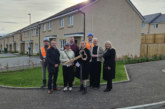The Government’s decision to press ahead with gradual staircasing under its new model for shared ownerships, is a gamble which could prove costly for housing associations and their tenants.
The recently published summary of responses to the shared ownership reforms consultation highlights industry concerns about the Government’s new model. The proposals stipulate that shared homeowners can buy a 1% share of their home every year without the need for a formal RICS valuation, but the industry has hit back to say this approach is too reliant on House Price Index (HPI) data, which is not a wholly accurate measure for determining a home’s worth.
The consultation response reveals that suggestions to use triennial RICS valuations or a pre-set annual inflator agreed at the point of sale were both rejected by the Government, which believes this approach is “likely to result in the shared owner over or under paying for additional shares, undermining the fairness of the scheme.” It also rejected calls for the use of regional HPI or other data.
Jonathan Pearson, Director at Residentially Chartered Surveyors, which specialises in valuations for affordable homes, welcomes the Government’s shared ownership reforms but has strong reservations about its decision to dismiss the risks of estimated valuations linked to purchase price: “The gradual staircasing offer to buy shares in smaller increments will make it quicker and more affordable for tenants to build up their equity, which is a very positive step for tenants, but by omitting the formal valuation procedure, there is the potential for a property’s stated value to be very quickly out of step with its environment.”
Affordable homes are often built in areas undergoing regeneration, and as the development scheme draws to a conclusion, there are more amenities and services for the local area. Raw housing data does not reflect this placemaking and the uplift in property prices for the neighbourhood.
Jonathan continued: “170 people gave a resounding ‘yes’ to the consultation’s question about whether 1% increments posed a risk of conflicting with a housing association’s obligation to sell assets at best value. Yet the proposals are going ahead, unchanged.”
While HPI data may offer housing associations ‘good value’ for their homes, it is not wholly accurate and at a time when surpluses are falling and demand for affordable housing is rising, the new model for shared ownership will not stack up for providers in the long-term.
“Housing associations and tenants need to use accurate information if they are to get the property value they deserve,” concludes Jonathan. “Ultimately the Government’s proposed approach and unwillingness to concede the flaws of relying on HPI data will create winners and losers, when they say they are committed to creating a system which is fair for all.”
In February, Residentially Chartered Surveyors’ Jonathan Pearson wrote an article for LABM on why its important Registered Providers consider a range of tenure options on their developments, not only to provide the opportunity for lower income households to get on the property ladder, but also to create more stable communities for tenants. You can read that article here.









